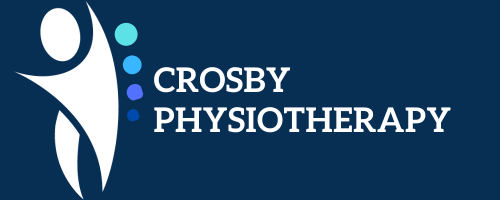Patellofemoral Pain
Patellofemoral pain is the preferred term used to describe pain in and around the patella. There are numerous factors that may contribute to the development of such symptoms and can be further categorised as extrinsic or intrinsic.
Extrinsic factors concern the load created by the body’s contact with the ground (ground reaction force) and is therefore modified by body mass, speed of gait, surfaces and footwear.
During weight-bearing activities, any increase in the amount of patellofemoral load (e.g. higher training volume, increased speed of running, hill running, plyometrics), may overload the patellofemoral structures sufficiently to initiate a painful process.
Intrinsic factors, or local factors is recognised as those related to movement of the patella within the femoral trochlea : patella tracking.
Remote Contributing Factors
The following may also contribute to the development of patellofemoral pain :
* increased femoral internal rotation
* increased knee valgus
* increased tibial rotation
* increased subtalar pronation
* inadequate flexibility
Local Contributing Factors
Local factors may also contribute to the development of patellofemoral pain :
* patella position
* soft tissue contributions
* poor neuromuscular control
Treatment of Patellofemoral Pain
1. Immediate reduction in pain
This may require some or all of the following : rest from aggravating activities, ice, anti-inflammatory medication, electrotherapy (e.g. ultrasound), soft tissue mobilisations, dry needling, acupuncture. Taping can also provide an immediate pain-relieving effect.
2. Addressing extrinsic contributing factors
Whilst initially it is vital to advise the patient to reduce the load on the patellofemoral joint, as rehabilitation progresses, it is essential that any extrinsic factors that may have been placing excessive load on the patellofemoral joint (e.g. training, shoes, surfaces) are discussed and modified if necessary.
3. Addressing intrinsic contributing factors
Remote intrinsic factors may be addressed through hip muscle retraining, improving musculotendinous compliance or fot orthoses. Local intrinsic factors may be addressed with techniques such as patella taping or bracing, improved soft tisue compliance and quadriceps strengthening.
Patella Taping
The aim of taping is to correct the abnormal position of the patella in relation to the femur. Patella taping reduces patellofemoral pain sunstantially and immediately.
Patella taping effects are assessed immediately using a pain-provoking activity such as a single or double leg squat. However, if patients are able to perform strengthening exercises pain-free without tape, then exercises alone will usually correct the abnormality.
Braces
Some braces are commercially available to maintain correct patella position and reduce patellofemoral stress.
Patellar Tendinopathy
Patellar tendinopathy was first referred to as ‘jumpers knee’ , due to its frequency in jumping sports. However, the condition also occurs in sportspeople who change direction, or who do not carry out excessive jumping activities within their sport.
Clinical Features
The patient complains of anterior knee pain, aggravated by activities such as jumping, hopping and bounding. The most common site of tendinopathy is the deep attachment of the tendon to the inferior pole of the patella. The tendon is tender on palpation either at the inferior pole or in the body of the tendon.
Treatment
It is essential that the practitioner and the patient recognize that tendinopathy that has been present for months may require a considerable period of treatment associated with rehabilitation before symptoms disappear. Conservative management of patellar tendinopathy requires appropriate strengthening exercises, load reduction, correcting biomechanical faults, and soft tissue therapy. Surgery is indicated after a considered and lengthy conservative programme has failed.
1. Relative load reduction : modified activity and biomechanical correction
There are numerous ways of reducing the load on the patellar tendon without resorting to complete rest or immobilisation. Relative rest means that the patient may be able to continue playing or training if it is possible to reduce the amount of jumping or sprinting, or the total weekly training hours.
There are numerous functional biomechanical abnormalities. Inflexibility of the hamstrings, iliotibial band and calf muscles, as well as restricted ankle range of motion, are likely to increase the load on the patellar tendon.
Strengthening
Interventions such as eccentric strengthening on a decline board, squats and isokinetics have been shown to reduce the pain of patellar tendinopathy. However, it should be stated that some cases can take between 6-12 months before a full functional recovery is achieved.
Soft Tissue Therapy
Techniques such as transverse frictions combined with ultrasound have been shown to reduce pain amongst patients with patellar tendinopathy.
Surgery
We recommend surgery only after a thorough, high-quality conservative programme has failed. Surgeons should advise patients that while symptomatic benefit is very likely, return to sport at the previous level cannot be guaranteed, and if achieved is likely to take between 6-12 months.
Synovial Plica
An inflamed plica may cause anterior knee pain. The patient typically complains of sharp pain on squatting. On examination, the plica is sometimes palpable as a thickened band under the medial border of the patella. In this case, arthroscopy should be performed and the synovial plica removed.
Osgood-Schlatter Lesion
This is an osteochondrosis that occurs at the tibial tuberosity. This is a common condition in girls of about 10-12 years and boys of about 13-15 years, but these ages may vary. It results from excessive traction on the soft apophysis of the tibial tuberosity by the patellar tendon. It occurs in association with high levels of activity during a period of rapid growth.
Whether or not to play sport depends on the severity of the symptoms. Children with mild symptoms may continue to play some or all sport; others may choose to reduce their sporting workload accordingly. There is no definitive timescale for recovery, although it usually subsides within 12 months.
Bursitis
There are a number of bursae around the knee joint.The most commonly affected is the pre-patellar bursa.
Pre-patellar bursitis (housemaid’s knee) presents as superficial swelling on the anterior aspect of the knee. Treatment of mild cases of bursitis includes ice application and anti-inflammatory medication. More severe cases require aspiration and injection of a corticosteroid. If despite these measures, there are several recurrences, surgical bursectomy may be required.

